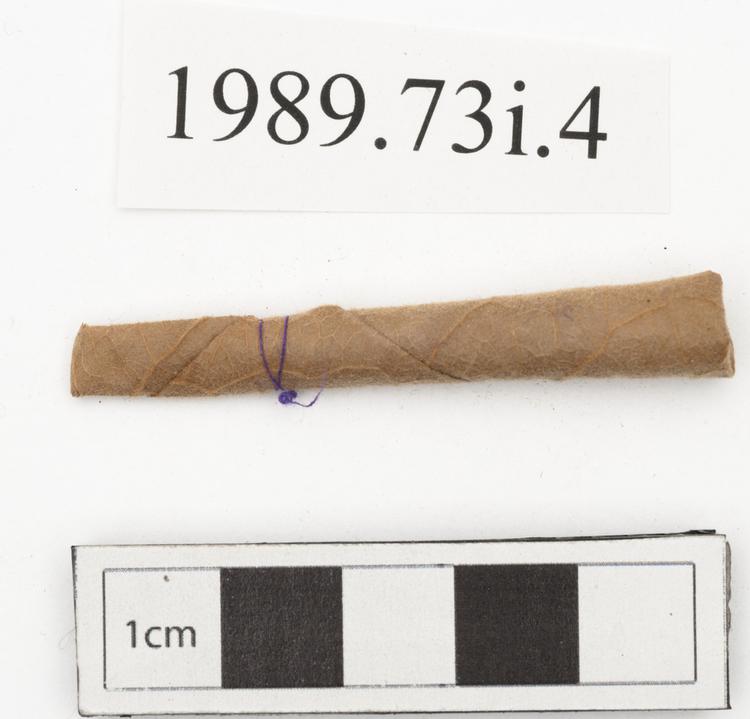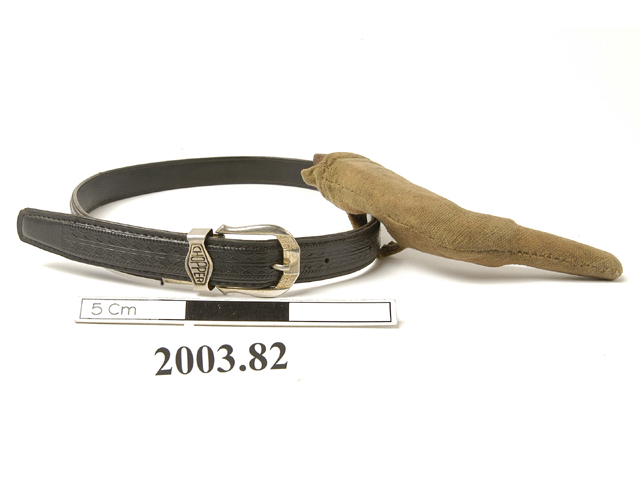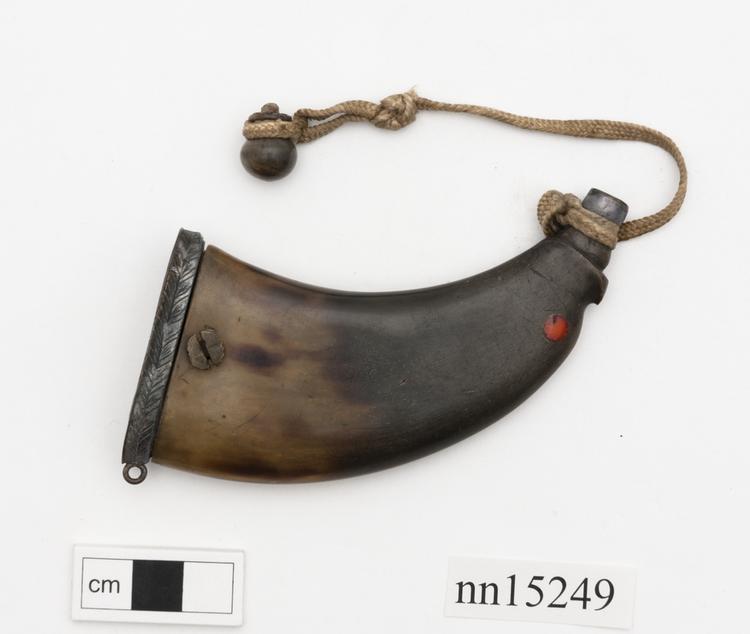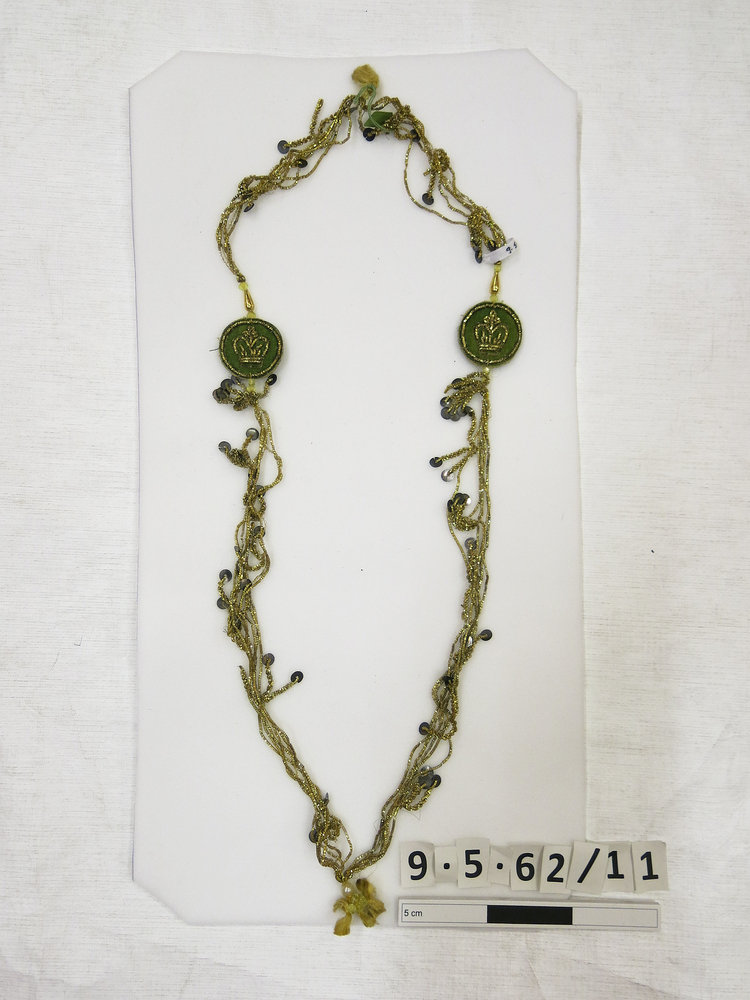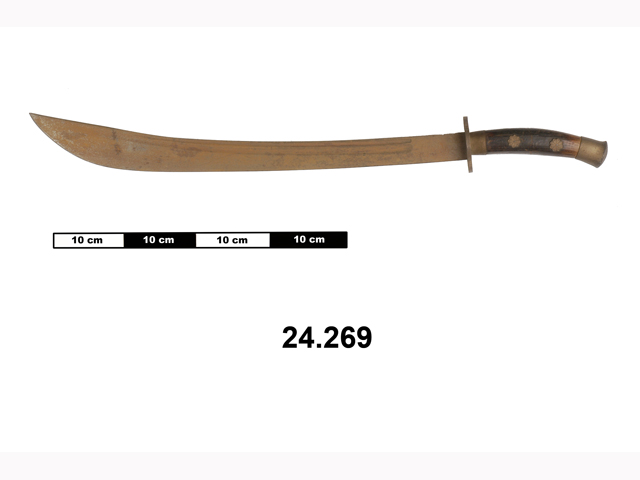
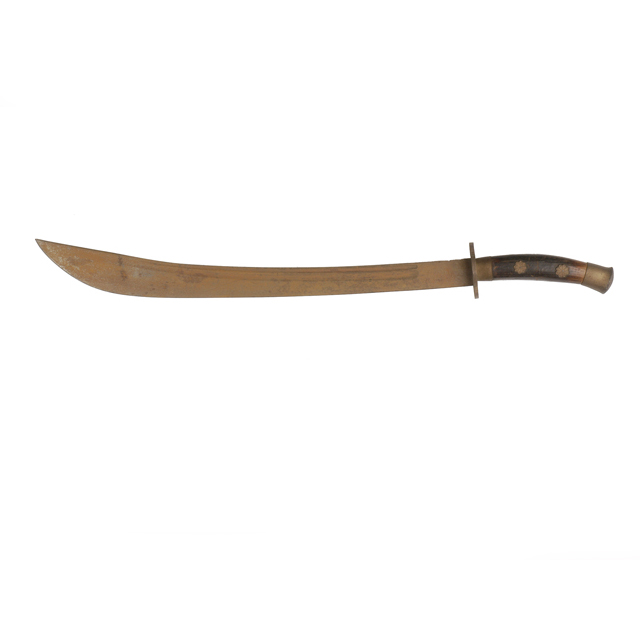
Single-edged steel sword, dao, with brass-mounted wooden grip inset with two brass floral designs, and a brass guard in four-lobed shape. The blade has two grooves near the back on each side, and curves upward towards the point.
The collector, George Edward Pereira, was born in 1865 in London and joined the Grenadier Guards in 1884. In 1899 he was seconded to the recently formed Chinese regiment at Wei-hai-wei. In 1900 he fought at Tientsin and in the relief of the legations at Peking. After a year touring Northeast China he rejoined his battalion in South Africa. In 1904 Pereira was appointed temporary military attaché to the British minister in South Korea, Japan and then China. He spent the following years making several long journeys in China. In 1921, aged 54, lame and in poor health, he set out to Lhasa. He left Peking in January and crossed many provinces finally arriving at Lhasa in October 1922. He was housed by the Tibetan commander-in-chief and met the Dalai Lama. He reached Calcutta in December was treated in hospital there for thrombosis. In January 1923 Pereira left Calcutta to explore the Tibetan-Szechwan border but died, from gastric ulcers, in Kanze, about 30 miles from the border, on 20 October 1923. His journeys on foot in China covered almost 45,000 miles. He carried out much important survey work, and his reports and maps were of great value to the British Government.
fighting



